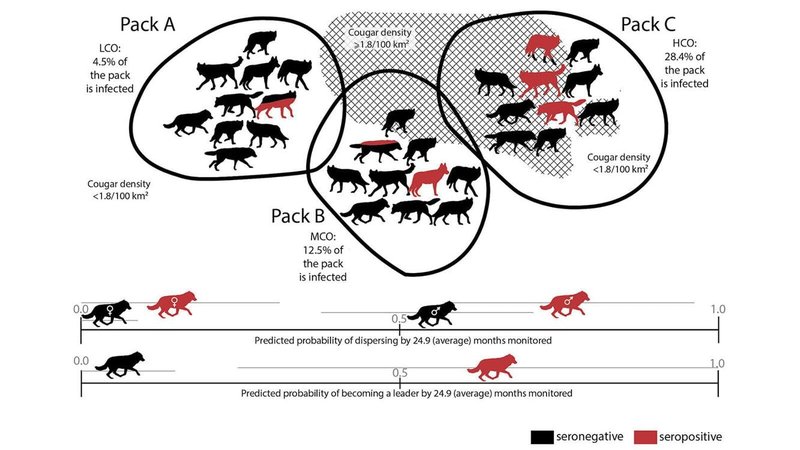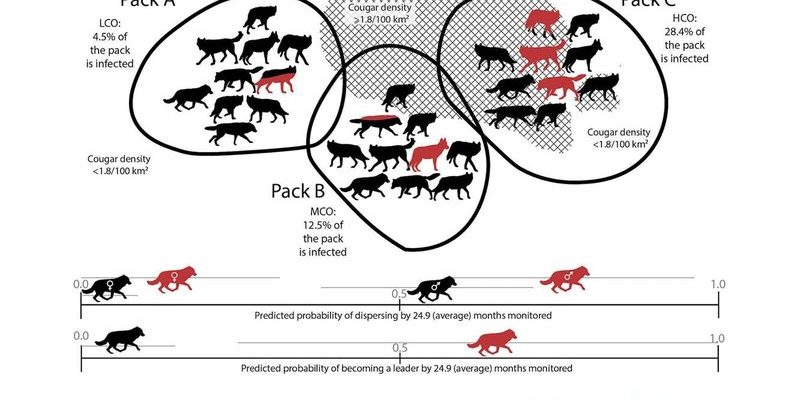
Imagine you’re hosting a coffee chat with a friend who’s curious about the relationship between predators and their prey. Wolf worms, or *Cystidicola spp.*, are the larvae of a type of roundworm that specifically targets rodents. Think of them as tiny hitchhikers that thrive within their hosts. Understanding how these wormy critters interact with rodents can reveal a lot about our natural world and the delicate balance of ecosystems. This exploration leads us to an essential topic: how worm infestations affect rodent populations, and, in turn, the animals that depend on them.
What are Wolf Worms?
Wolf worms are the larval stage of a parasitic roundworm that usually lives in the intestines of rodents. Once ingested, the eggs hatch, and the larvae migrate through the body, causing various health issues for their rodent hosts. Picture an unwelcome guest that refuses to leave and starts taking over all the best spots in your house. This takeover naturally decreases the overall health and survival rates of the infected rodents.
These worms have a life cycle that is intriguing. They require a host—typically rodents like rats or mice—to mature and develop. The adult worms can reproduce inside the host, producing more eggs that exit with the rodent’s waste, allowing the cycle to continue. It’s like a never-ending saga: host, parasite, and then back to host again.
But why should we care about these creepy crawlies? Well, they play a significant role in shaping rodent populations, which can have ripple effects throughout the entire ecosystem. Given how many animals prey on these rodents, understanding wolf worms can give us deeper insights into the survival and behavior of various wildlife.
The Impact of Wolf Worms on Rodent Health
Wolf worms create a direct impact on their rodent hosts, leading to significant changes in behavior and health. Research shows that infected rodents often exhibit signs of weakness, reduced reproductive success, and a general decline in health. Imagine trying to run a marathon with an unwanted burden on your back—it’s not going to go well!
Infected rodents may also have compromised immune systems, making them more susceptible to other diseases. This can lead to a dramatic decline in their population, which is critical because rodents are essential players in the food web. They’re a primary food source for various predators, including hawks, owls, and, yes, wolves. So, when wolf worms reduce rodent populations, it creates a domino effect that can impact whole communities of animals.
You might wonder about the signs of a rodent infected with wolf worms. Common symptoms include noticeable weight loss, hair loss, and general lethargy. If you ever find yourself in a natural setting, keep an eye out for these signs. Knowledge is power, after all!
Rodent Behavior and Habitat Changes
The presence of wolf worms can also affect how rodents behave and where they choose to live. Infected rodents tend to avoid areas where they feel vulnerable, such as open fields where predators can easily spot them. Instead, they might seek refuge in more concealed habitats, like dense underbrush or underground burrows.
This shift can lead to significant changes in rodent distribution. By moving away from open areas, they may inadvertently allow other species to fill the gaps they leave behind. Think of it as a game of musical chairs: when one group is forced to leave, another may step in to take their place. Since the dynamics of rodent populations can directly influence their ecosystems, these shifts can be pivotal.
Moreover, you might start to notice changes in the behaviors of predators as they adapt to locate their prey. They may spend more time hunting in areas that are typically less active. These adaptations can be profound, showcasing how tightly knit the connections between species are in any given ecosystem.
The Role of Predators in Regulating Rodent Populations
Predators, including wolves, hawks, and even domestic cats, play a crucial role in controlling rodent populations. You might think of predators as nature’s managers, helping to keep the rodent numbers in check. When wolf worms reduce the overall health and vitality of these rodents, it can make them easier targets for predators.
This relationship is particularly noteworthy during certain seasons. For example, in winter, when food sources are scarce, predators may rely more on finding weaker, infected rodents. The increased predation pressure can then further reduce rodent populations, creating a cycle of decline. It’s a cycle of life and death that’s as fascinating as it is brutal.
In effect, wolf worms help ensure that the rodent populations aren’t too large, which could lead to overgrazing or depletion of vegetation. By keeping these populations in balance, they unwittingly assist in maintaining the health of entire ecosystems.
Potential Benefits of Wolf Worms for Ecosystem Health
While it might be easy to view wolf worms as nothing but trouble, they do have their perks in terms of ecosystem health. By limiting rodent populations, they help prevent overpopulation, which can lead to other ecological issues. It’s a tough love approach, but sometimes nature needs it.
Moreover, the dynamics brought about by wolf worms can increase biodiversity. With fewer rodents around, different animal species get a chance to thrive and occupy those niches left behind. This can lead to a more diverse array of plants and animals, ultimately enriching the ecosystem as a whole.
It’s also worth noting that health issues in rodent populations can make scientists more aware of environmental changes. If large numbers of rodents are showing signs of worm infestations, it might indicate habitat degradation or shifts in the environment. This insight can lead to better conservation strategies.
All things considered, the relationship between wolf worms and rodent populations is a prime example of nature’s intricate dance. These tiny parasites may seem insignificant, but their impact resonates throughout entire ecosystems. Understanding this connection helps us appreciate the balance of life and the roles different species play within it.
Next time you’re outside and catch a glimpse of a rodent, remember the unseen world of wolf worms and how they shape the lives around them. Whether you’re a nature enthusiast or just curious about the world, there’s always something new to learn about these fascinating dynamics. It’s a reminder that every creature, no matter how small, contributes to the grand tapestry of life.

